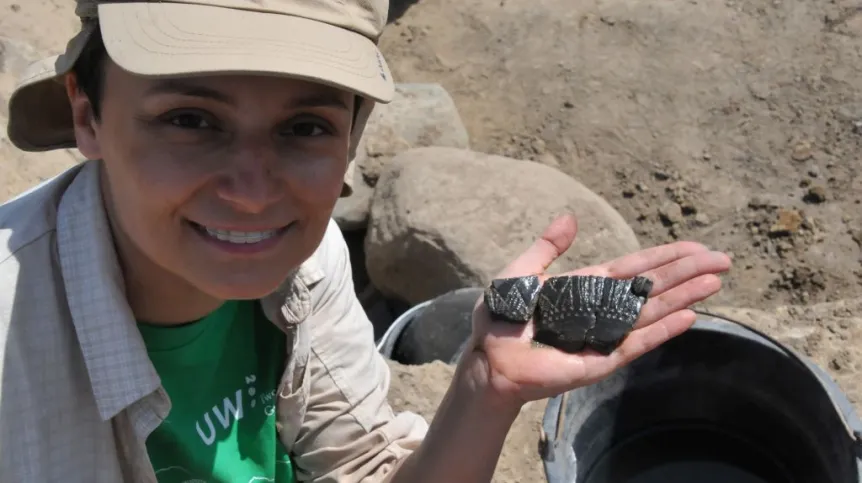
Rock art on the island of Bornholm is older than previously thought - indicate discoveries made during the June excavations of Warsaw archaeologists in the sun temple in Vasagard.
The enthusiasm of archaeologists was triggered by the discovery of a small stone with a series of carved flat recesses.
"This completely changes the existing theories about the rock engravings on the island of Bornholm" - told PAP Anna Bucholc, research project participant from the Institute of Archaeology of the University of Warsaw (IA UW). Until now it was thought that such manifestations of art appeared a thousand years later. Meanwhile, the unusually decorated object comes from the Neolithic period, i.e. approx. 5 thousand years ago.
Bornholm is the only place with such accumulation of rock engravings, which are attributed to the Bronze Age and dated to more than 3-4 one thousand years ago - archaeologists believe. Recent excavations of Polish archaeologists moved the history further back. Now researchers are trying to properly document the important discoveries. On their basis, head of 3D Scanners Lab at IA UW Marta Bura develops the methodology that will contribute to recording similar findings.
Polish researchers have been conducting research at the Vasagard site since 2015. According to Danish archaeologists, discovered objects indicate that magic rituals were probably held there more than 5.5 thousand years ago. It was the location of a temple surrounded by palisades. Experts believe that it was a place of sun worship. This is indicated by the entrances to the complex, located in the direction of sunrise during the solstice or equinox. Last year, archaeologists discovered several ditches, in which, in their opinion, corpses were being placed to be decomposed. The bones were then being moved to proper burial chambers.
During this year\'s work archaeologists also discovered so-called sun stones. They are small stones given the shape of the disk. On one side there are carved images of sun rays. The stones discovered by Polish archaeologists were mostly burned, and often deliberately broken, probably in connection with rituals - researchers speculate.
The research project is the result of several years of cooperation between the Institute of Archaeology of the University of Warsaw and Bornholms Museum. As part of the agreement, every year archaeology students from the UW IA come for the excavations on the Danish island arrive and gain experience. This year, they work together with students from the University of Aarhus.
"Working together at the site results not only in great scientific discoveries, but also establishing contacts between young scientists" - said Janusz Janowski, head and originator of the Polish mission on Bornholm.
PAP - Science and Scholarship in Poland
szz/ agt/ mrt/
tr. RL













